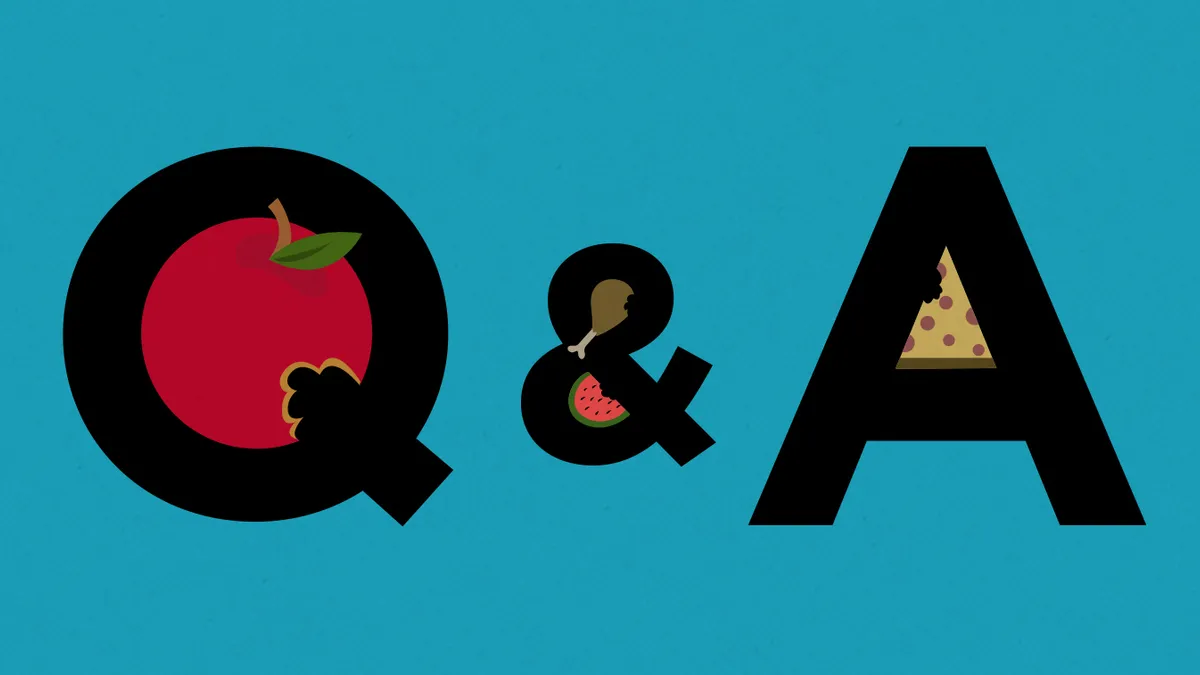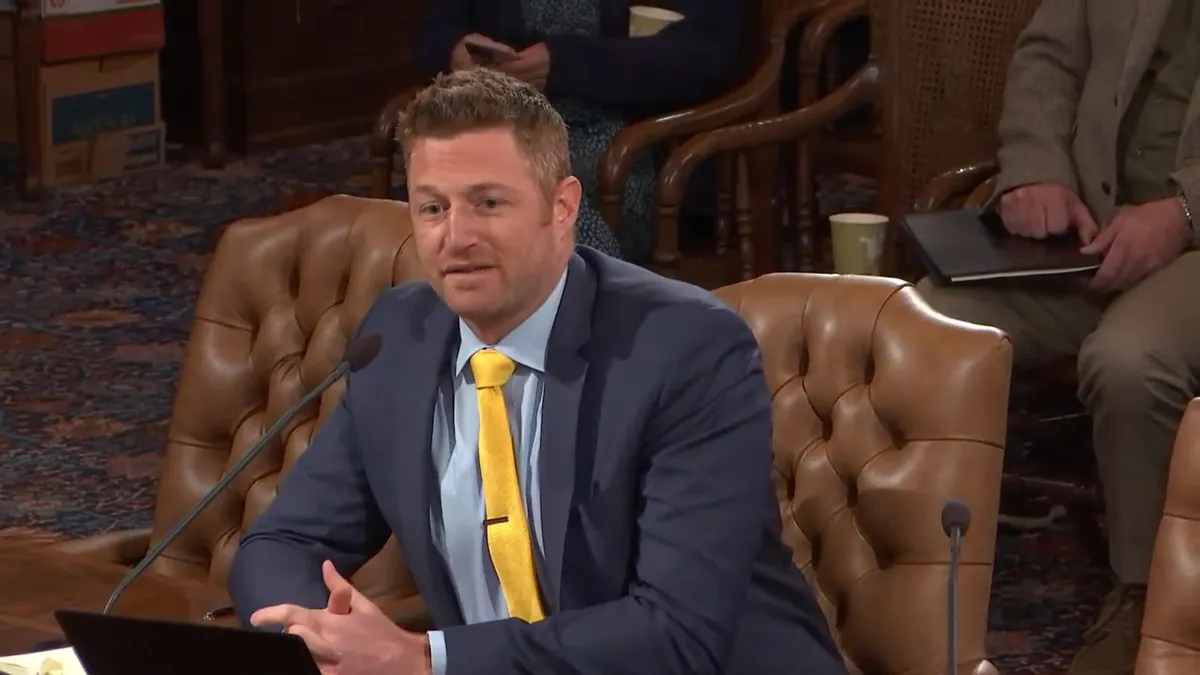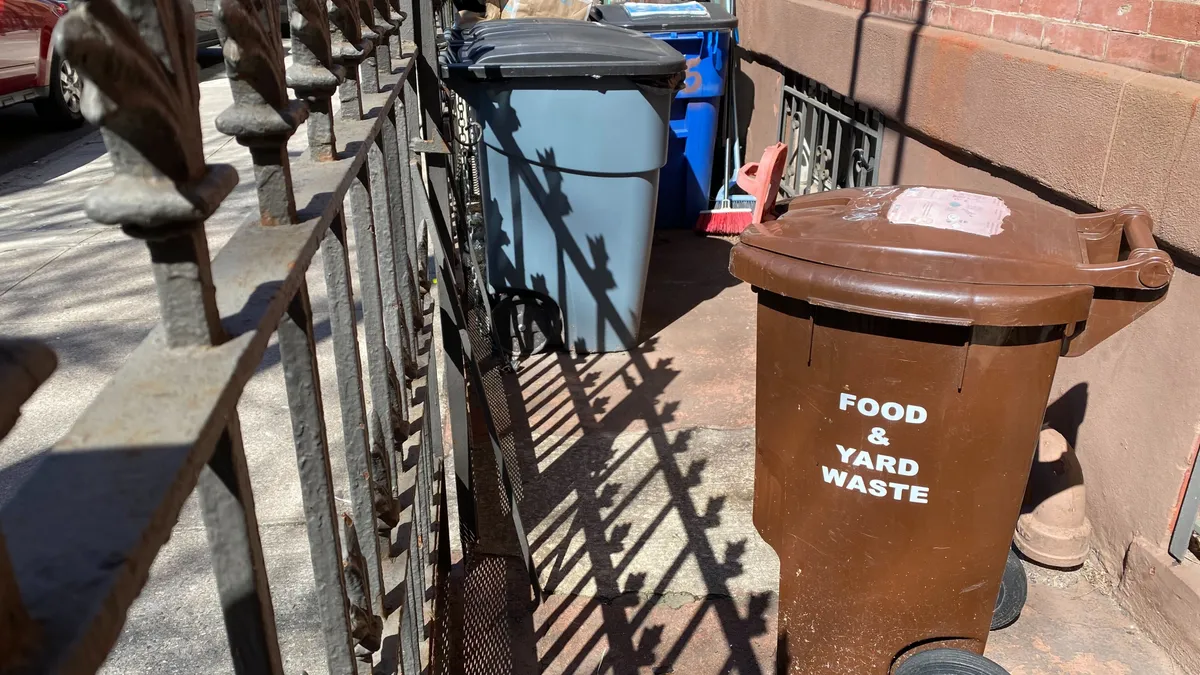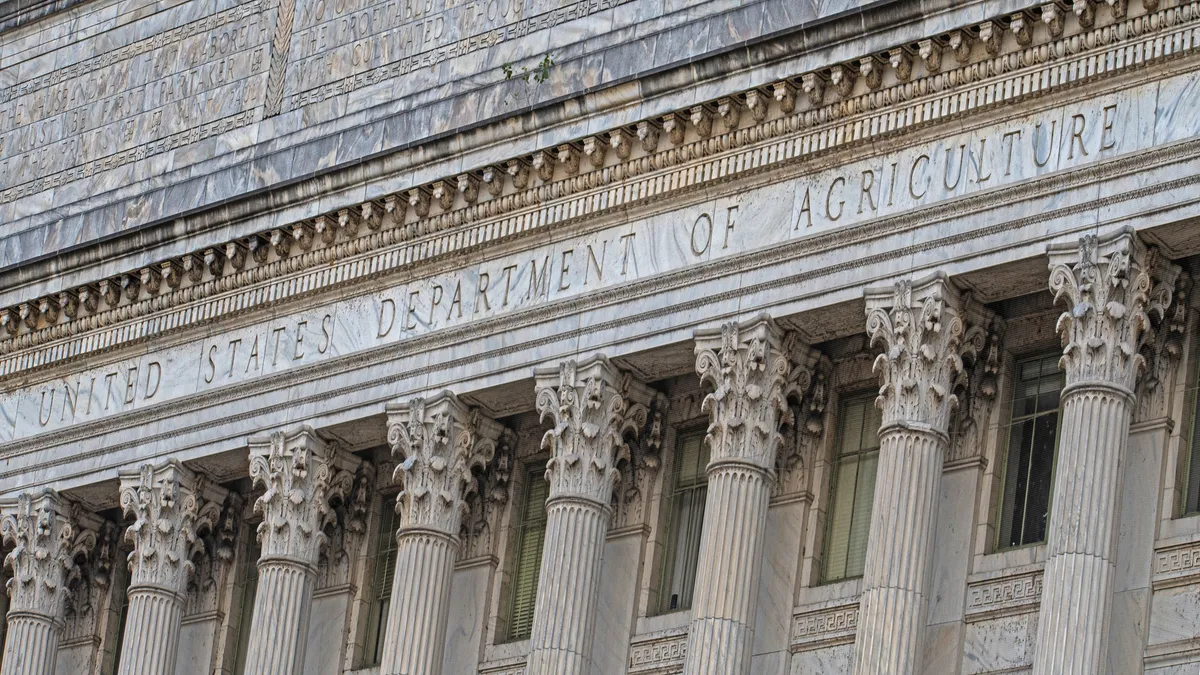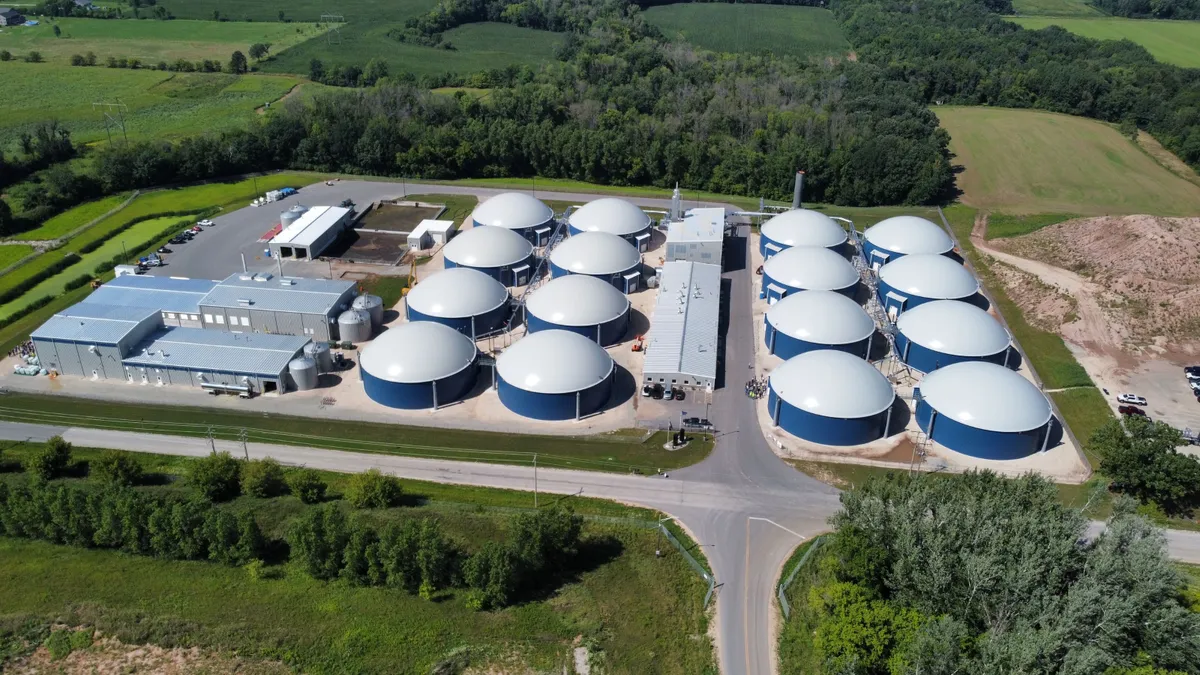Dealing with the massive amounts of food waste generated each day is, of course, a challenge that needs to be met from production to disposal. Following the EPA's Food Recovery Hierarchy, the best way to reduce food waste is to produce less food, which would minimize the volume of surplus food that will, ultimately, go to waste.
The hierarchy also incorporates using excess food to feed hungry people or feed animals, or using it for industrial purposes. At the very bottom of the hierarchy is shoveling the food waste into a landfill or incinerating it. While organic material in landfills can produce methane gas — providing a small boost to operations that collect landfill gas — it's seen as one the least desirable ways to dispose of food waste. Organic material that could be digested, processed or composted takes up valuable airspace in landfills. Methane that isn't collected instead gets trapped in the atmosphere, where it acts as a powerful greenhouse gas.
That leaves a handful of processing options, including anaerobic digestion, composting and incorporation at wastewater treatment facilities — but which method is the most effective? Not all experts share the same opinions, therefore Waste Dive reached out three industry professionals to hear their arguments for the best food waste processing methods.
The following interviews have been edited for clarity and brevity.
Anaerobic digestion: Patrick Serfass, Executive Director, American Biogas Council
Waste Dive: Why is processing food scraps through anaerobic digestion the best way to handle food waste?
PATRICK SERFASS: The one thing that sets anaerobic digestion (AD) apart is it's ability to scale up. Usually the larger AD systems are the most profitable. This works well in urban areas, where there are lots of people and therefore lots of food waste.
The other big advantage anaerobic digestion has is that it produces renewable energy in addition to a great soil amendment. In settings where you have a lot of food waste to recycle, you probably also have many ways to use that renewable energy, whether it's in the form of electricity, vehicle fuel, heat or just renewable natural gas injected pipelines.
What makes anaerobic digestion a better method for handling food waste than say, composting food waste?
SERFASS: It's hard to find land in many urban areas for 100-300 tons per year of food waste to be composted. But a few big AD tanks will take care of that handily. Also, AD systems that handle food waste are inherently better at capturing odors, due to the use of closed tanks. This contrasts with the open-air nature of composting facilities. Of course, both kinds of systems can be operated well, so odor is contained and also both can be operated or designed poorly, creating noxious odors, but usually AD systems are going to be better and more reliable at containing odor.
Are there ways to take AD to a larger scale in the U.S.? What could the industry do to get more municipalities or other investors on board with anaerobic digestion projects?
SERFASS: Putting policies in place that require large food waste generators to recycle their food waste, if there's a recycling facility nearby that's willing to accept their food waste, is a known way to help get more facilities built. The reason is that a bank is much more willing to finance a project that has multi-year contracts with food waste generators, and those contracts are much more likely to be signed if recycling is required. Otherwise, month-to-month or quarterly disposal contracts are more enticing.
To really get food waste recycling to take hold, the general public has to want to recycle food. In many areas around the U.S., we now know it's bad to put a plastic water bottle, aluminum can or glass jar in the trash. Even cardboard. But what about food waste? We have to get every American to care about making sure their food waste is recycled. As that happens, people will start asking the right questions that lead to more recycling facilities being built.
Composting: Frank Franciosi, Executive Director, U.S. Composting Council
Waste Dive: Why is composting the best, or one of the best, ways to handle the food waste issue?
FRANK FRANCIOSI: Composting facilities are not as capital-intensive to build and operate, in comparison to other methods of disposal. Compost manufacturing facilities provide skilled jobs for the local economy. But the best reason and benefit for choosing composting as a true recycling option is compost products. For example, using compost in and around the landscape reduces irrigation requirements. Compost retains water and reduces leaching loss for plants. It reduces soil erosion and runoff. Compost in the soil improves soil structure, water infiltration, and water holding capacity of the soil. It slowly releases essential macro- and micro-nutrients, reducing the need for mineral or synthetic fertilizers, and making these fertilizers more effective. It can suppress diseases and can reduce the need for regular pesticide application. I could go on with a couple of pages worth of compost use benefits. The bottom line is, composting closes the loop on organics and compost is a true cradle to cradle product.
What makes composting better than, for example, using anaerobic digestion to create biogas?
FRANCIOSI: Selecting anaerobic digestion over composting, on the surface, sounds like the right choice. Pulling energy from waste makes perfect sense. But it’s more complicated than just this. These facilities are capital-intensive and there needs to be a return on investment. The ROI improves where you have high food scrap volume, high tipping fees and good energy subsidies. They also make sense where you have small a footprint, a dense population and high energy costs. Most all of these systems produce a byproduct in the form of a digestate. A large majority of digestate is disposed of by land application on agricultural lands. We encourage and support AD facilities that compost this byproduct for higher value end use. AD facilities tend to take longer to permit, mainly because many states do not have specific AD permitting rules. So putting AD ahead of composting, or vice versa, is really up to location, funding and ROI.
What strategies are there to encourage further implementation of composting?
FRANCIOSI: We need to increase existing capacity and develop new composting infrastructure where it doesn’t exist. There are several strategies to that can be used to make this happen. On the federal level, we propose low-cost loans and grants to states that have developed long-term waste management plans. On the state level, we encourage food scrap bans that are backed by funding and concise plans to develop infrastructure.
Municipalities also need to include centralized compost manufacturing as part of their long-term solid waste management plan. We also propose more public-private partnerships. Local governments have the capabilities to provide pre-zoned land or sites for facility development.
Incorporating food scraps at wastewater treatment facilities: Jon Koch, Director, Water Pollution Control Plant in Muscatine, IA
Waste Dive: What makes processing food waste at a wastewater plant the best option for tackling the food waste issue?
JON KOCH: There's a lot of talk in the industry of the utility of the future. This really is a good step toward that. The utility of the future will be something that processes lots of different materials. To combine solid waste and wastewater into a resource recovery is the best option. It's a natural fit. We process solids at wastewater plants anyway. We capture that in AD, and there’s thousands, tens of thousands of these digesters out there that could be taking this material and making it useful, rather than just flaring it off.
What makes it a better option than, say, building a separate digester on a farm, or composting?
KOCH: We're already here. The public entity is really set up to do this, because we’re not going away, we’re not going out opf business. We already have the infrastructure. Farms should do it, there’s some excellent resources for them out there. But if you're going to collect food waste from a city, now you have to drive this stuff all the way out to a farm somewhere, so you’ve got to use more energy to transport that material out there.
There’s a lot more energy that comes out of it this way. Compost is wonderful, it makes a great soil amendment, and it does reduce landfill reliance. But to make clean, renewable energy out of this is really the ultimate goal. If you take something that was going as a loss as methane and convert it into a fuel, you’re actually sinking carbon in the process. That’s a key for us — to have an inexpensive, renewable fuel made right here in town. We could see a local closed loop system here.
Are there ways to take this kind of food waste processing to scale in the U.S.? What can the industry do to get more local operators on board?
KOCH: It’s hard to make people think about taking big investments like this. It takes some bold action and some bold council members to say, 'Yeah, we want to be that kind of community.’ I work with a group called the Water Environment Federation, which is really doing a lot of work with this now. They’re encouraging places to do this as much as possible.
This won't require raising rates at all, this is brand new money for the city. There's a cost-negative aspect to this. In the future, it will be generating money. Hopefully at a flat rate for the citizens here.


